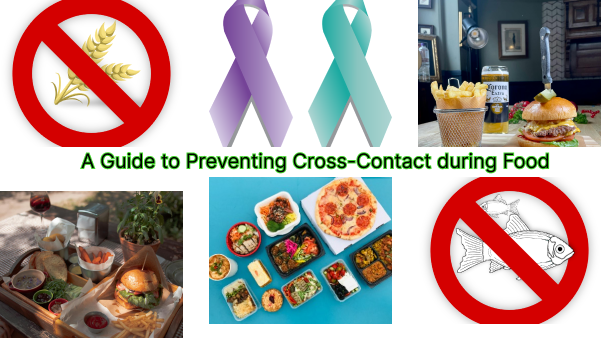A Guide to Preventing Cross-Contact during Food Handling and Storage Leave a comment
Cross-contact, the unintentional transfer of allergens from one food to another, poses a significant risk to those with food allergies or intolerances. One of the challenges and concerns of food allergy patients is cross-contact between foods (or surfaces) during food handling and storage, potentially creating cross-allergies between items. This article offers valuable guidelines to minimize cross-contact during this process.
A Guide to Understanding Cross-Contact
Allergens cannot be eradicated through cooking and heating processes alone; thus, avoiding cross-contact is essential in protecting oneself against potential allergens that could potentially be deadly. Even small doses may trigger adverse allergic reactions in individuals who are sensitive to them.
How to Prevent Cross-Contact during Food Handling
To safeguard against cross-contact, attention to detail and adherence to proper handling procedures are essential. Whether in a bustling kitchen or at home, understanding and implementing preventive measures can uphold the integrity of dishes and protect the health of all who indulge. This guide explores practical strategies to mitigate cross-contact risks.
1. Separate Utensils and Equipment: When it comes to allergen-free meals, always use clean and separate utensils, cutting boards, and equipment – for instance. Don’t use the same knife used for peanut butter sandwiches to cut an apple for someone with peanut allergies.
2. Gloves: Change gloves when switching between preparing allergen-free and allergen-containing foods.
3. Sequence: Prepare allergen-free meals first before handling allergic foods. This reduces the risk of cross-contact.
Preventing Cross Contact during Food Storage
Effective food storage practices are essential for maintaining freshness and safety in a culinary setting. However, the risk of cross-contact looms as a persistent concern. To safeguard against this, we must follow proper storage procedures.
1. Storage Containers: Store allergen-free foods in dedicated, sealed containers.
2. Separation: Keep allergen-containing foods separate from allergen-free foods. Ideally, use different shelves or areas in the fridge or pantry.
3. Labeling: Clearly label allergen-free foods to prevent accidental mix-ups.
Mitigating Risks in Shared Spaces
In shared kitchens or dining spaces, ensuring that all family members or colleagues understand the principles of cross-contact and preventing it is crucial. Color-coded utensils and kitchenware can help easily distinguish items used for allergen-free cooking.
Cross-contact management is an integral aspect of allergen control. Following the recommendations shared here can significantly lessen the chance of unintended exposure to allergic food ingredients.
P.S: Enroll in our Allergen Awareness course to learn more about allergy management.

